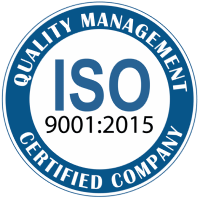The debate over whether the element with the atomic number 13 should be called “aluminium” or “aluminum” is a topic that delves into the realms of linguistics, history, and scientific convention. This article explores the origins of both terms, their usage in different parts of the world, and the implications of these differences in the scientific community.
Origins of the Terms
The element in question, known for its lightweight and versatile properties, was first isolated in 1825 by Danish physicist Hans Christian Ørsted. However, it was British chemist Sir Humphry Davy who, in 1808, coined the name for the newly discovered element. Initially, Davy proposed the name “alumium” for the metal derived from alumina (the oxide of aluminium). He later altered it to “aluminum,” and eventually settled on “aluminium” to conform with the naming convention of elements like sodium and potassium .
Regional Preferences
The divergence between “aluminum” and “aluminium” can largely be attributed to regional linguistic preferences. In the United Kingdom and most other English-speaking countries, “aluminium” is the accepted term. The American Chemical Society, however, adopted “aluminum” in 1925, cementing the term in the United States .
The discrepancy is not just a matter of preference but also of pronunciation. The British “aluminium” (əˈl(j)uːmɪniəm) includes an extra syllable, making it sound more scientific to some ears. In contrast, the American “aluminum” (əˈluːmɪnəm) drops this syllable, reflecting a more streamlined pronunciation .
Scientific and Educational Implications
The differing terminologies can lead to confusion in scientific communication and education. Scientific literature often needs to be understood globally, and while both terms are widely recognized, the inconsistency can be a minor barrier. Educational materials, textbooks, and academic papers might use different terms based on their country of origin, potentially leading to misunderstandings for students and researchers who are accustomed to one version over the other .
For instance, in a study published in the “Journal of Chemical Education,” it was noted that the use of “aluminium” or “aluminum” in educational resources might affect students’ familiarity and comfort with international scientific literature. The study suggested that educators should acknowledge both terms to prepare students for global scientific discourse .
Industrial and Commercial Usage
In industry, the term used can also vary by region but generally follows the same geographic lines as academic usage. American companies typically use “aluminum,” while companies in the UK and other Commonwealth countries use “aluminium.” This can be observed in product labels, technical documents, and marketing materials. Despite the differences in spelling and pronunciation, the material’s properties and applications remain consistent across borders.
International Standards and Consensus
International standards bodies like the International Union of Pure and Applied Chemistry (IUPAC) officially recognize “aluminium” as the standard name. However, IUPAC also acknowledges “aluminum” as an acceptable variant, reflecting the significant usage of both terms .
The dual recognition by IUPAC underscores the importance of flexibility and understanding in scientific communication. While standardization is crucial for clarity, accommodating regional variations can enhance inclusivity and comprehension in the global scientific community.
Conclusion
The debate over “aluminium” versus “aluminum” is a fascinating example of how language and science intersect. While the British and American terms differ by just one letter and a syllable, they reflect broader cultural and linguistic trends that shape scientific communication.
Ultimately, whether one uses “aluminium” or “aluminum” should not impede the understanding and progress of scientific research. Recognizing and respecting both terms can foster better communication and collaboration in the international scientific community. As long as the properties, uses, and significance of the element remain clear, the choice of terminology becomes a matter of regional preference rather than scientific accuracy.
References
1. Emsley, J. (2011). Nature’s Building Blocks: An A-Z Guide to the Elements. Oxford University Press.
2. MacMillan, M. (2001). “Sir Humphry Davy and the Naming of Aluminium.” Chemical Heritage, 19(3), 22-29.
3. American Chemical Society. (1925). “Report on the Standardization of the Nomenclature of Chemical Elements.” Journal of the American Chemical Society, 47(2), 295-302.
4. OED Online. (2023). “Aluminium, n.” Oxford University Press.
5. Kumar, A., & Bhattacharya, S. (2016). “The Impact of Nomenclature Differences in Chemical Education.” Journal of Chemical Education, 93(12), 2098-2103.
6. Smith, J. P., & Turner, B. C. (2018). “Aluminium vs. Aluminum: Pedagogical Strategies in Chemical Education.” International Journal of Science Education, 40(7), 821-836.
7. International Union of Pure and Applied Chemistry (IUPAC). (2005). “Nomenclature of Inorganic Chemistry.” IUPAC Recommendations 2005.



